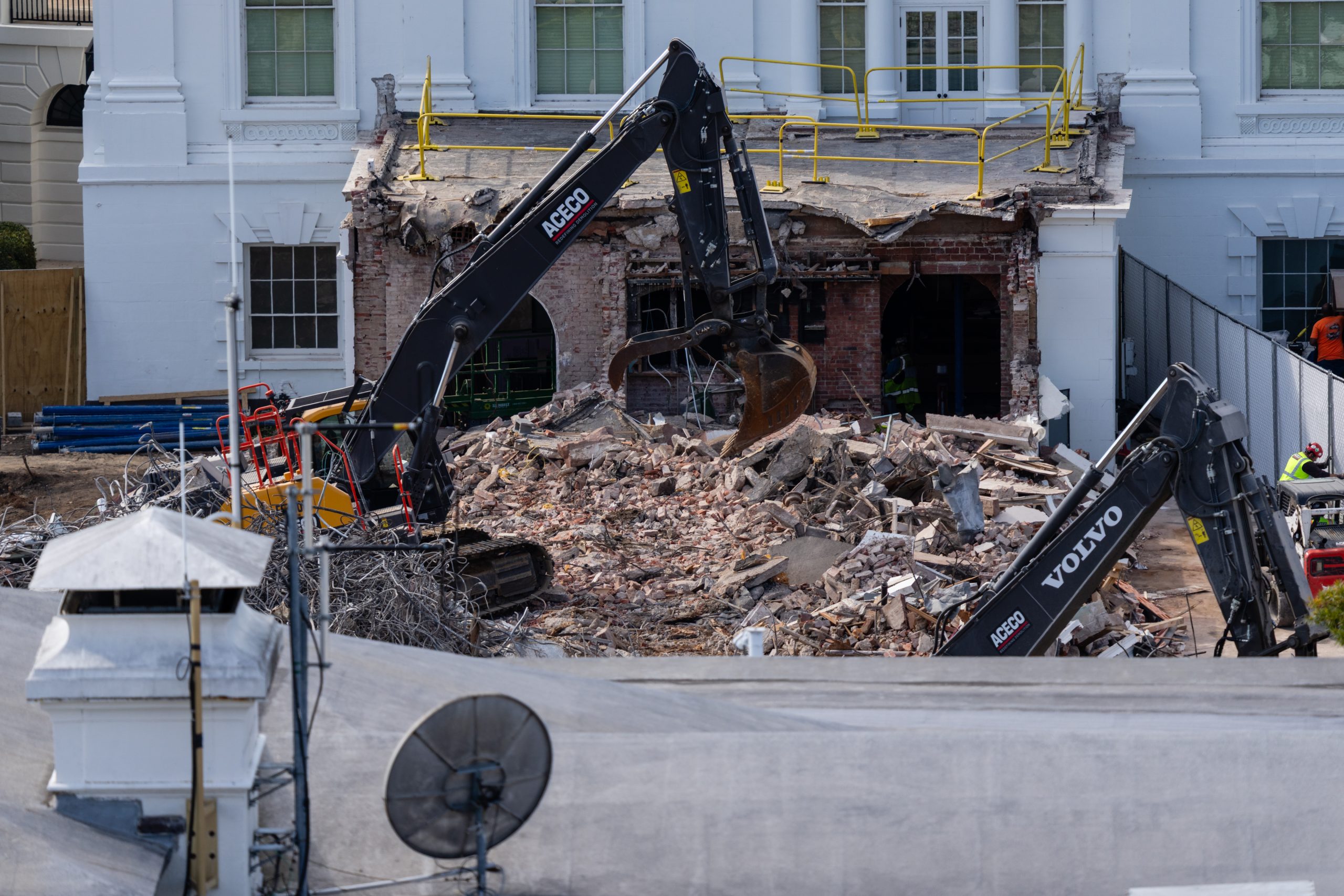Trump Razes White House East Wing for Mega-Ballroom
In a move that has sparked both outrage and admiration, former President Donald Trump has overseen the demolition of the White House’s East Wing. The demolition, completed October 23, 2025, makes way for a colossal 90,000-square-foot ballroom capable of hosting nearly a thousand guests. The $350 million project, funded by private donations, represents a radical departure from presidential tradition and has ignited a fierce debate about its implications for the American public.
A Symbolic Shift?
The razing of the East Wing has been met with mixed reactions. Critics view it as a symbolic erasure of history and a manifestation of Trump’s disregard for established norms. The destruction of a historical landmark to create a space for lavish entertainment has been interpreted as a tone-deaf display of opulence, particularly in an era marked by economic uncertainty for many Americans.
Debbie Millman, a designer and educator at the School of Visual Arts, notes the polarizing nature of the project, stating, “There are those that do see it representing prosperity; that certainly can be aspirational. But that’s not the status of most Americans.” This sentiment underscores the widening gap between the perceived elite and the average citizen, raising questions about who the new White House truly represents.
A Vision of Grandeur
Supporters, on the other hand, see the new ballroom as a symbol of American strength and global influence. They argue that the enhanced space will provide a fitting venue for hosting foreign dignitaries and showcasing the nation’s cultural and economic prowess. The project’s proponents claim that it will boost tourism and create jobs, ultimately benefiting the American economy.
The sheer scale of the ballroom is undeniably impressive. Its completion marks a significant transformation of the White House grounds, forever altering the landscape of one of the world’s most iconic residences.
Rewriting History, Redefining Legacy
Whether viewed as an act of historical vandalism or a bold statement of national ambition, the demolition of the East Wing and the construction of the mega-ballroom will undoubtedly be a defining moment in Donald Trump’s legacy. It represents a willingness to challenge established norms and reshape the physical and symbolic landscape of the presidency. As the dust settles on this controversial project, the question remains: what lasting impact will this transformation have on the relationship between the White House and the American people?
SOURCE INFORMATION:
TITLE: Trump’s East Wing demolition is nothing like previous White House renovations
DESCRIPTION: The White House’s East Wing is gone. With its demise, President Donald Trump continues to rewrite history, including the traditions of how a US president can take a bulldozer to the “people’s house.” For Trump, the East Wing had to be demolished to make way for a 90,000-square foot ballroom to host foreign dignitaries and […]
CONTENT: What used to be the East Wing of the White House, on October 23, 2025, in Washington, DC. | Eric Lee/Getty Images The White House’s East Wing is gone. With its demise, President Donald Trump continues to rewrite history, including the traditions of how a US president can take a bulldozer to the “people’s house.” For Trump, the East Wing had to be demolished to make way for a 90,000-square foot ballroom to host foreign dignitaries and 999 guests. It’s a massive $350 million project he said will be paid for by private donors. The viral images of the demolition awakened intense emotions ranging from horror to celebration, and stirred questions of what this new White House means for everyday Americans. “[There are] those that do see it representing prosperity; that certainly can be aspirational,” said Debbie Millman, designer and educator at the School of Visual Arts in New York City. “But that’s not the status of most Americans.” We spoke with Millman about Trump
SOURCE: Vox
Based on materials: Vox





